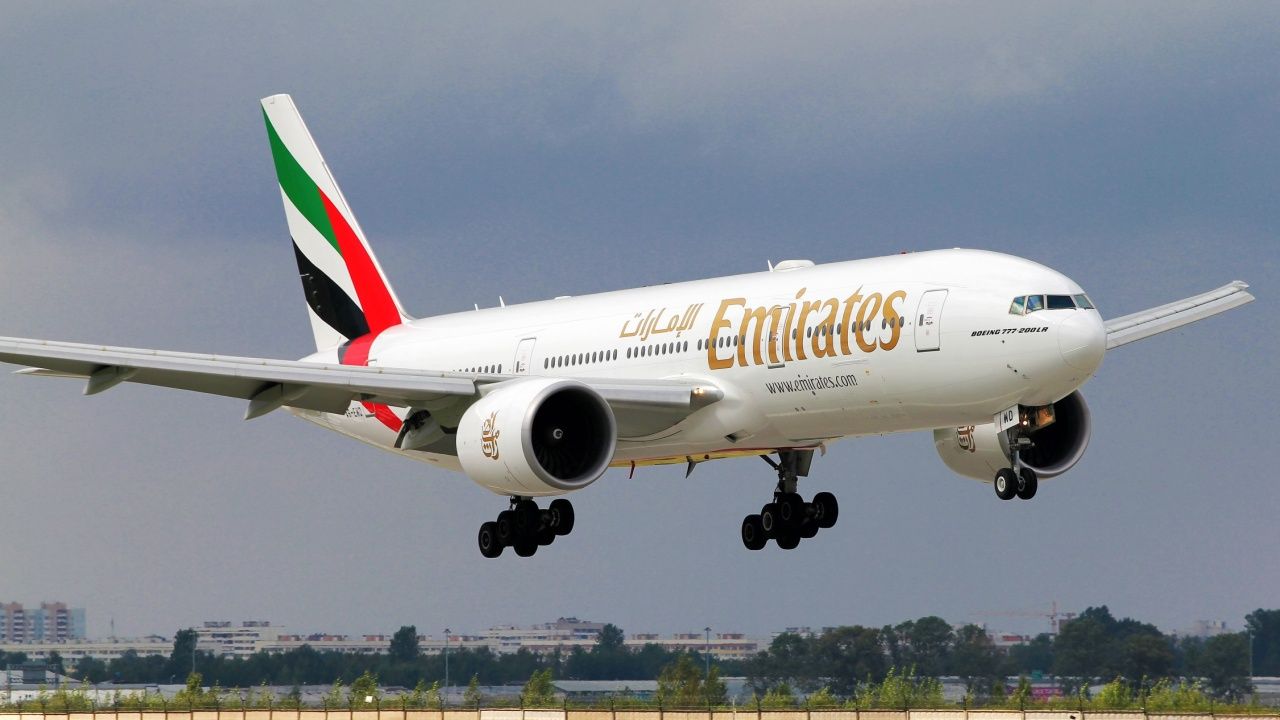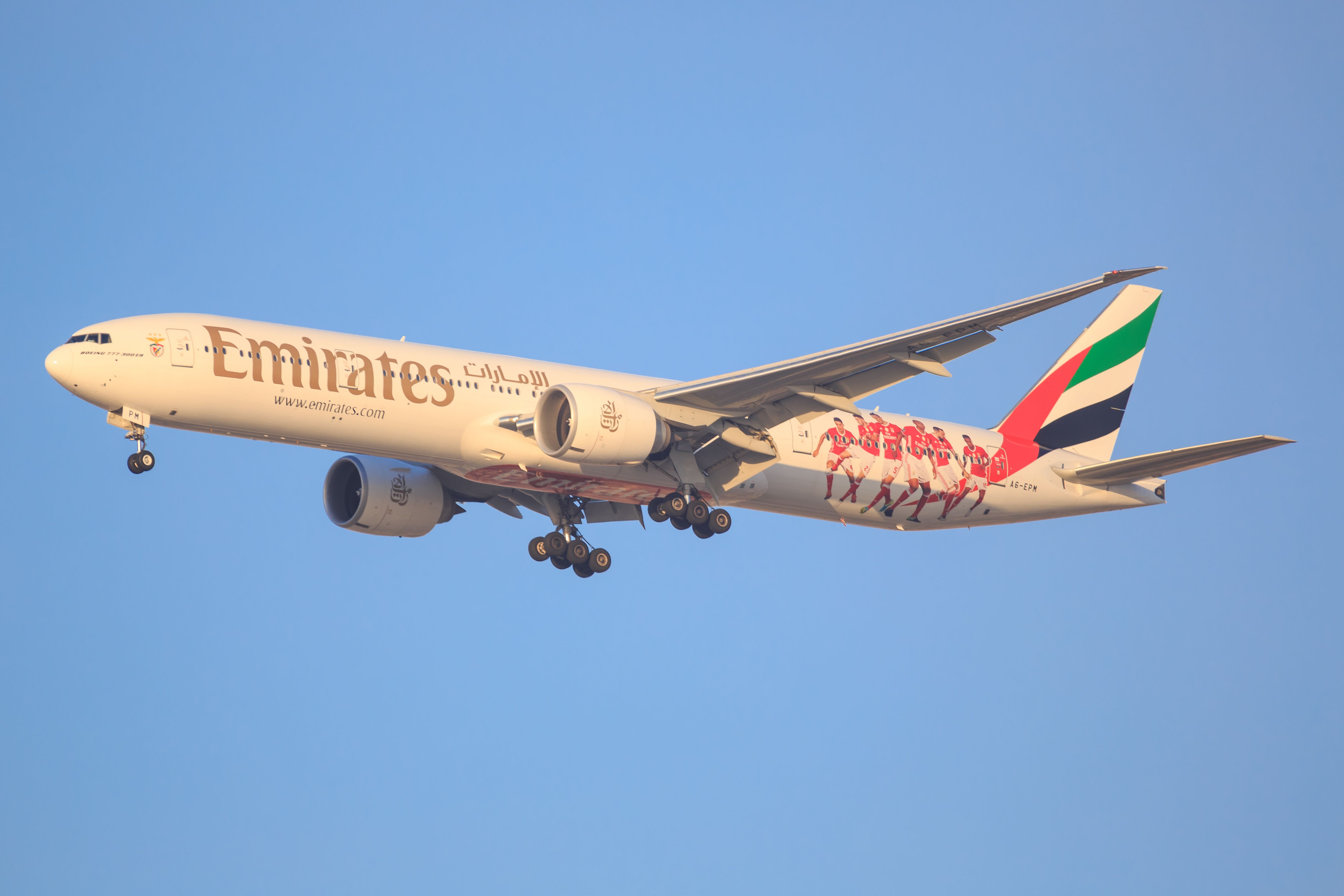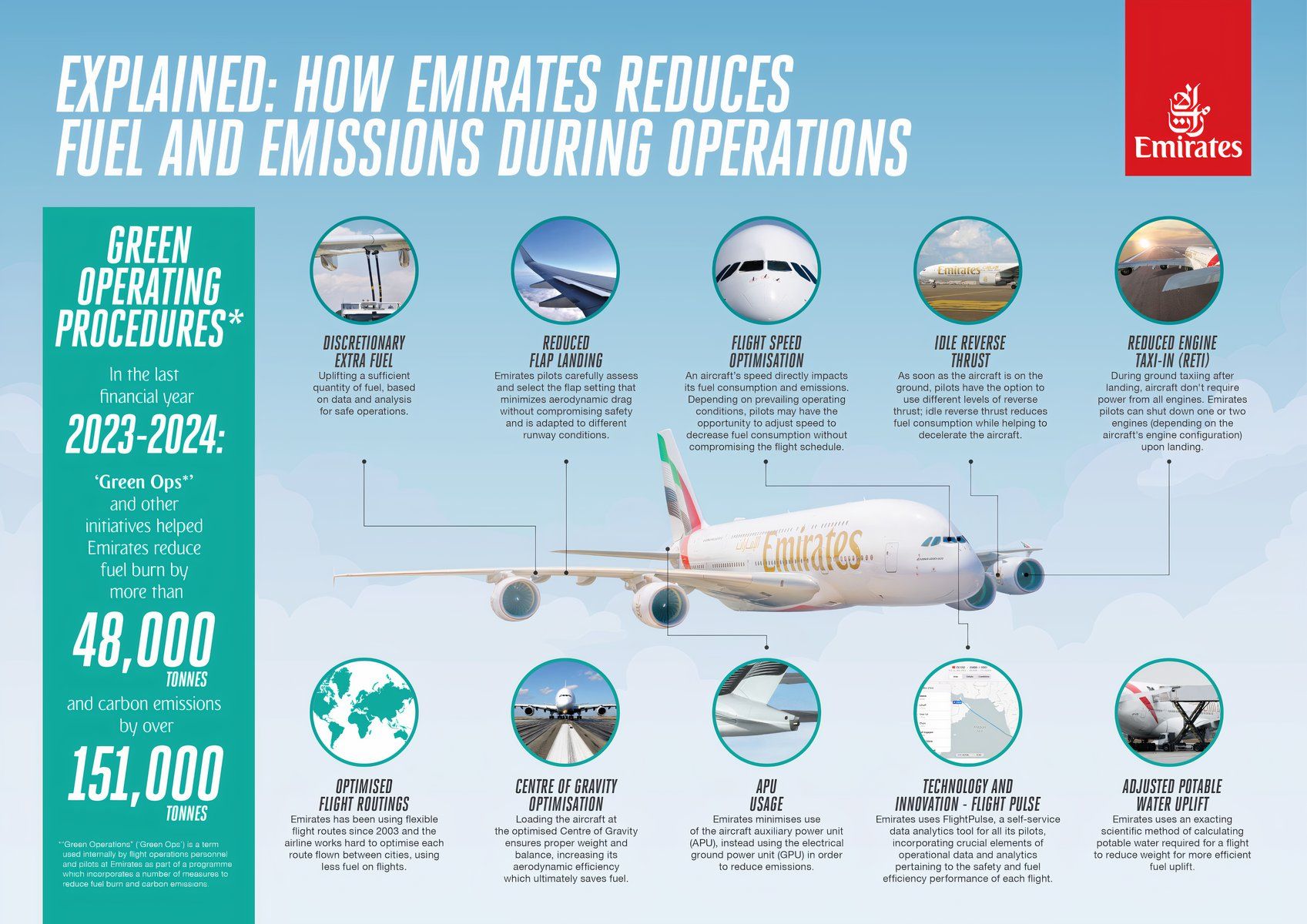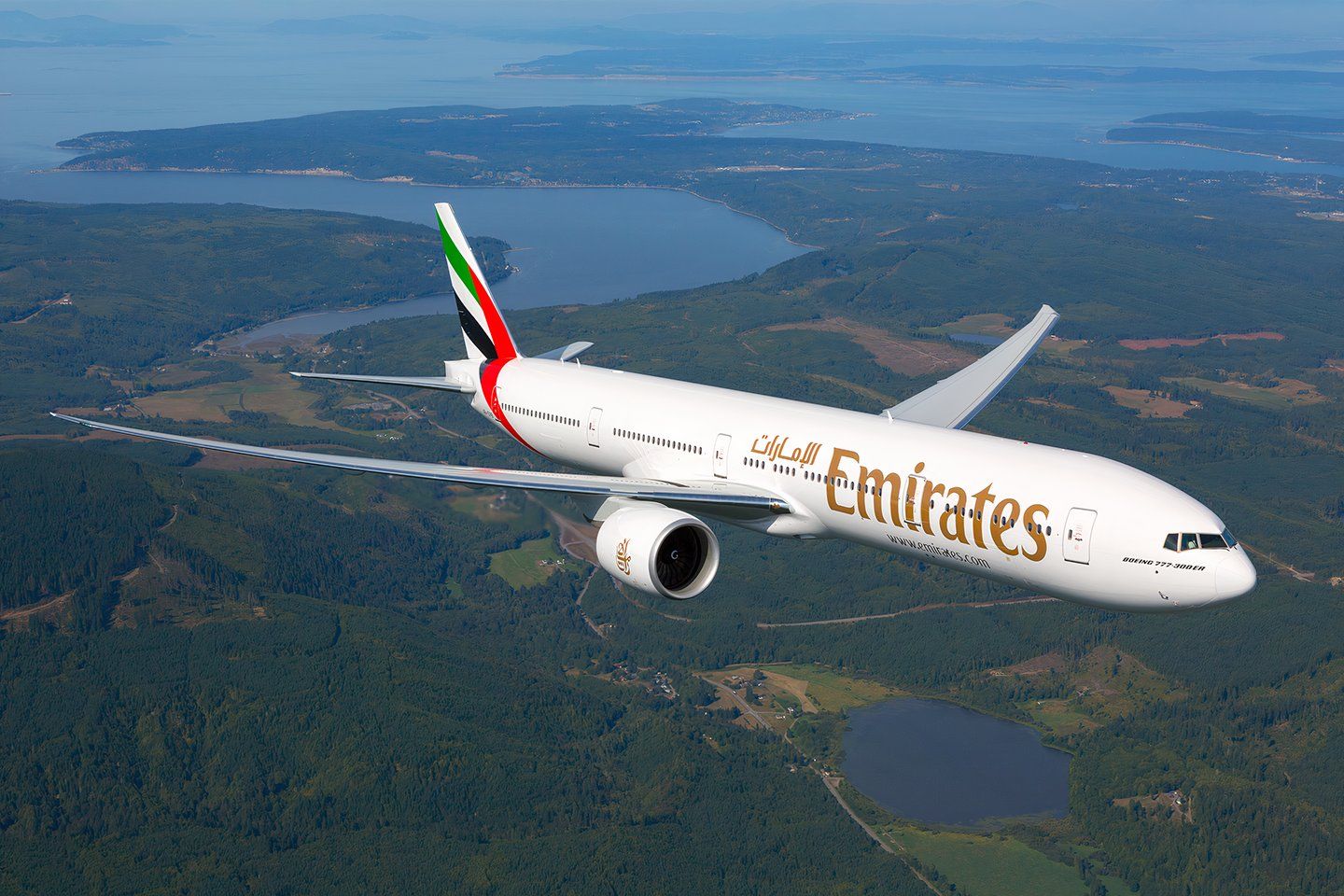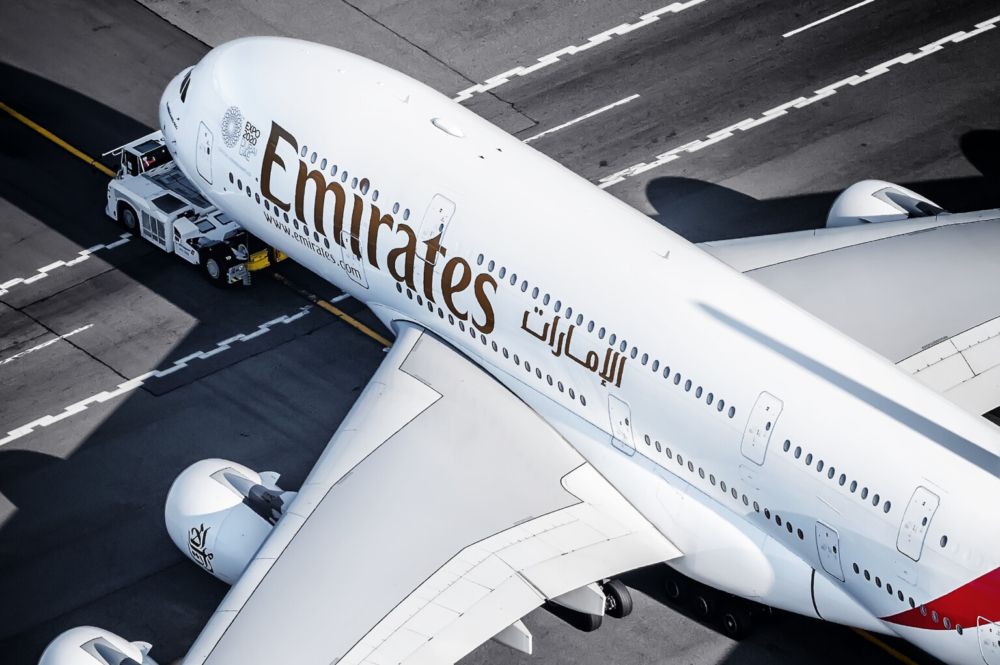Summary
- The cross-functional Operations Efficiency Steering Group leads the carrier without jeopardizing the airline’s high safety standards
- With ultimate responsibility for the flight, the captain ensures that the flight uplifts with enough fuel for safe operations.
- The carrier has ensured flexibility across most of its flight routes since 2003 by adopting flight planning efficiencies.
As one of the most identifiable airlines on the planet, Emirates has gotten used to being in the spotlight. This has pros and cons, and Emirates continues to aim big and revolutionize how we travel from A to B. Emirates serves all inhabited continents from its Dubai-based hub with its Airbus A380 and Boeing 777 aircraft fleet. The airline will soon welcome the Airbus A350-900 and, eventually, the Boeing 777-8, 777-9, and 787-10.
For Emirates, ‘flying smarter’ will require a dedicated focus on minimizing fuel consumption, starting from the very top and the aircraft cockpit. An example of this has been the airline’s “Green Operating Procedures,” which has focused on a multi-pronged approach since 2016. This approach would scope out opportunities to reduce on-ground and in-flight fuel use while providing pilots with further education, awareness, and data analytics and technology to manage flights as efficiently and sustainably as possible.
Photo: Mike Fuchslocher | Shutterstock
The cross-functional Operations Efficiency Steering Group leads the carrier without jeopardizing the airline’s high safety standards. This group looks for the carrier to mitigate any unnecessary fuel burn, which will limit emissions wherever possible. Just last financial year, the airline, through this initiative, reduced fuel burn by 48,000 tonnes and carbon emissions by over 151,000 tonnes. Emirates Divisional Senior Vice President Flight Operations, Captain Hassan Al Hammadi, reiterated the airline’s achievements and aspirations:
“We’re proud of the work done across the Flight Operations team and the contributions of our pilots in significantly reducing fuel consumption and emissions. This could have only happened through collective discipline, commitment, and dedication to sustainable aviation practices in the cockpit, all while maintaining the highest levels of safety. We’ve equipped our pilot community with the latest tools and applications to monitor and review their flight performance, helping them to improve their awareness of how their flying techniques impact fuel consumption and emissions. We’ll continue to invest in cutting-edge technologies and accelerate solutions that yield long-term environmental benefits.”
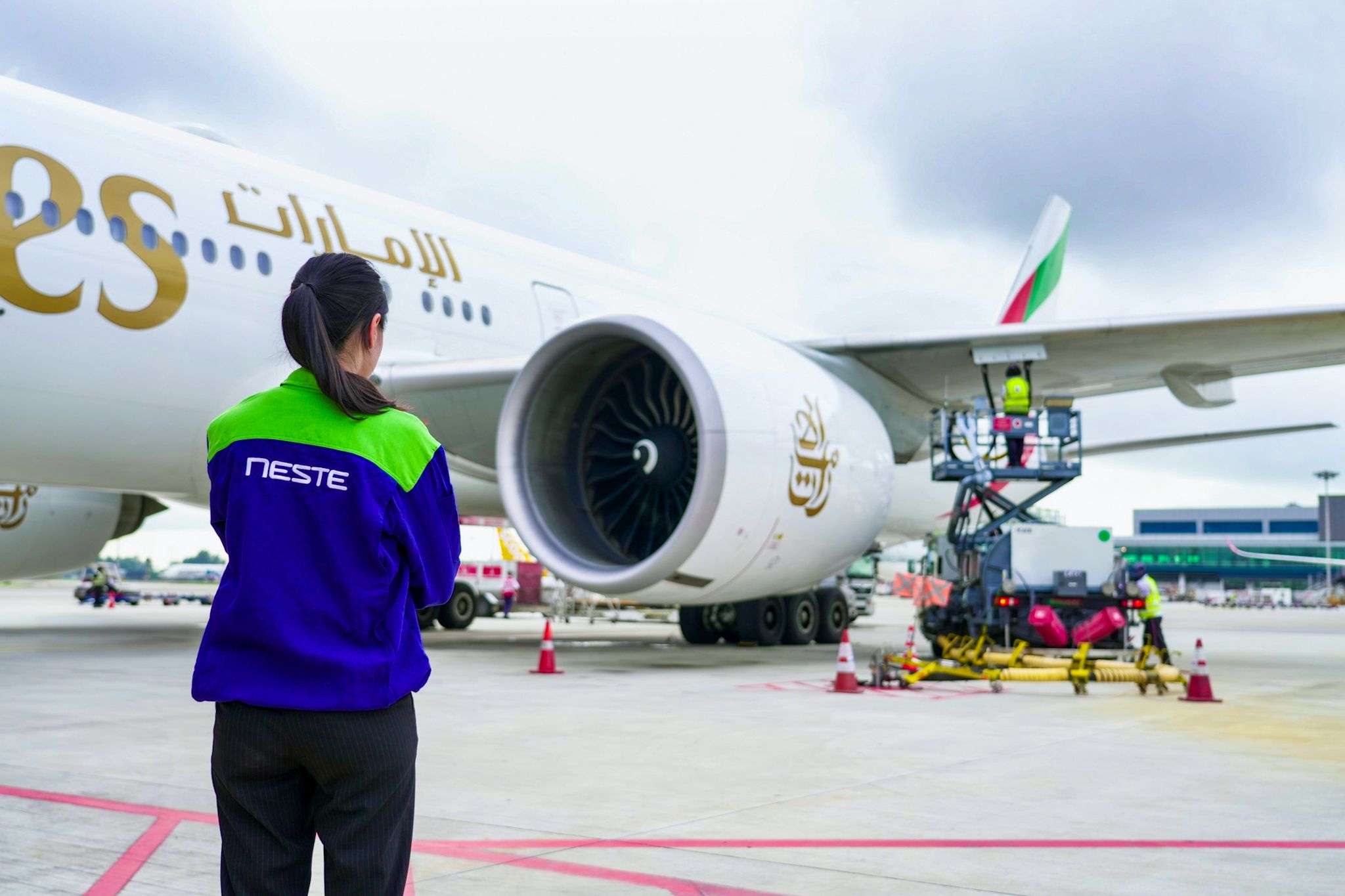
Related
Emirates Is Now Fueling On Neste SAF At Singapore Changi
Emirates is now refueling aircraft with locally produced sustainable aviation fuel at Singapore Changi Airport.
Reducing fuel burn and emissions
Emirates has several measures already in place, whether in the air or on the ground, that look to optimize the airline’s unnecessary fuel burn and emissions, which include:
Discretionary fuel
With ultimate responsibility for the flight, the captain ensures that the flight uplifts with enough fuel for safe operations. However, with a thorough assessment of operations statistics, the captain, at times, may look to uplift extra fuel than required. This decision encourages them to make well-founded judgments, and with access to data and analysis, they can make informed decisions. As a result, discretionary extra fuel use has been reduced significantly.
Optimizing flight speed
With aircraft speed directly impacting fuel consumption and emissions, Emirates has crunched the numbers to identify the optimum speed based on calculations that maintain adherence to departure and arrival schedules. This depends on conditions where the pilot may need to make last-minute adjustments. The inflight standard operating procedures (SOPs) include speed management as a vital part of the airline’s integrity and ensure that the passengers and crew’s safety remains at the forefront of decisions.
Photo: Emirates
Coming in for a landing
With a growing fleet of widebody aircraft, Emirates ensures pilots assess the flap settings to minimize aerodynamic drag, reducing fuel consumption. In addition to reduced flap landings, as soon as the aircraft touchdowns, pilots onboard have to decide on different levels of reverse thrust. Based on conditions, Emirates will aim to prioritize its use of idle reverse thrust, which, in return, reduces fuel consumption.
After arrival, during taxiing, Emirates pilots use the opportunity to engage in reduced engine taxiing, which involves shutting down one or two engines. This practice is called Reduced engine taxi-in (RETI) and does not affect the airline’s safety or operational efficiency. Its use has increased sevenfold since becoming a frequent practice at the Middle Eastern carrier.
Getting you from A to B
Optimizing the flight route
The carrier has ensured flexibility across most of its flight routes since 2003 by adopting flight planning efficiencies. The airline can do this by:
- Liaising directly with air traffic control
- Collaboration with other industry bodies
- Analysis of routing through the airline network
As a result, it has reduced emissions, enables flights to carry less fuel, and saves time for passengers onboard.
FlightPulse
EK made a giant leap forward through collaboration with GE Digital Aviation Services with its launch of FlightPulse. This self-service data analytics tool is used with all pilots, allowing them to incorporate crucial operational data with analytics that ensure safety and fuel efficiency.
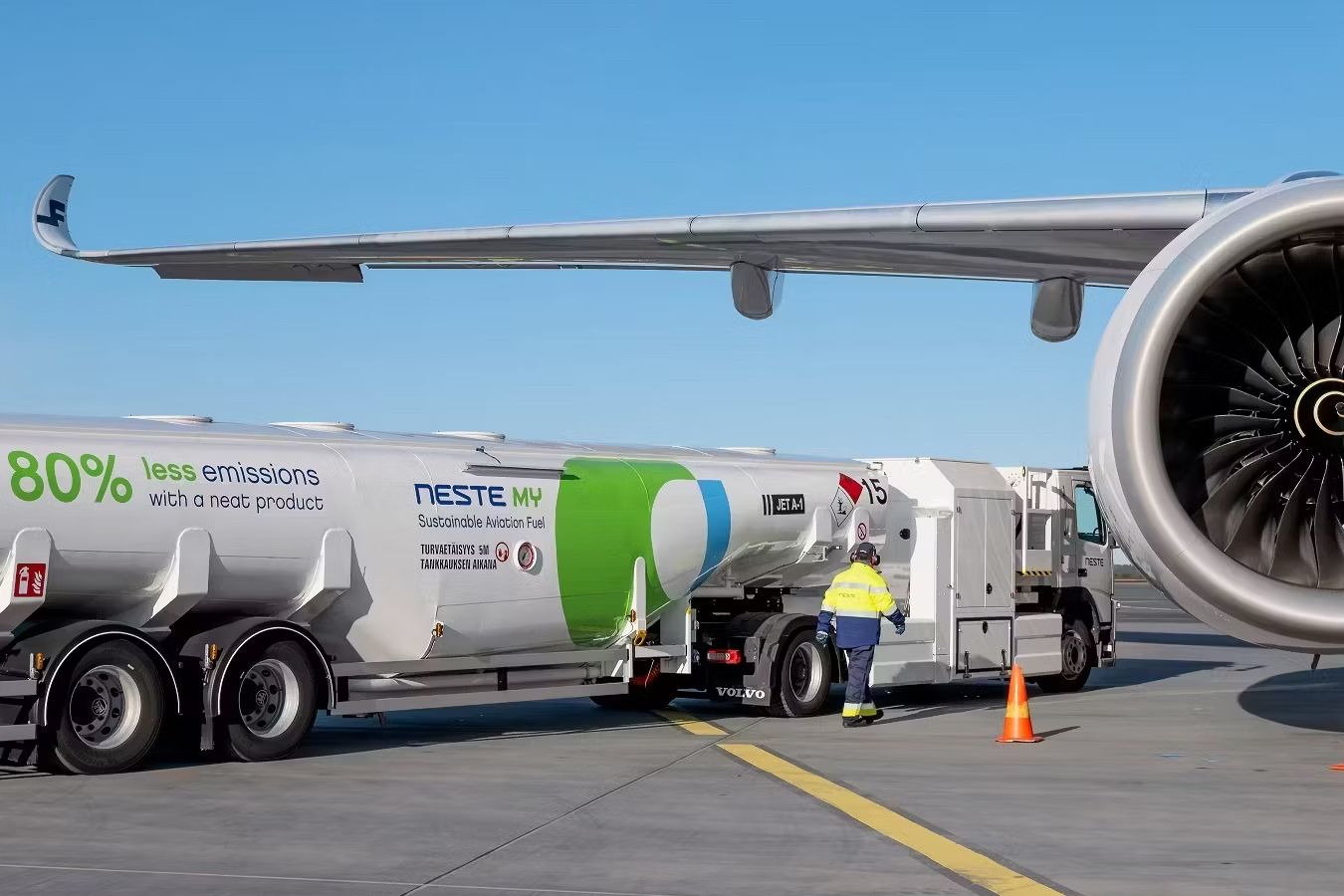
Related
Aviation Sustainability: What Progress Was Made In 2023?
The industry achieved several breakthroughs throughout the course of the year.
Centre of Gravity
An aircraft center of gravity influences the efficiency and safety of each flight. To ensure the aircraft is loaded optimally, the proper weight and balance will increase aerodynamic efficiency. EK goes through a rigorous policy when loading aircraft to get as close as possible to the ideal ‘trim line’ to ensure minimal fuel burn.
Photo: Emirates
Auxiliary Power Unit
When aircraft are on the apron, opting for an electrical ground power unit over the auxiliary power unit has seen a 30% reduction since launching the initiative.
Potable Water
The Middle Eastern carrier uses science to calculate the optimum potable water supply required, ensuring the flight can operate with reduced weight without affecting passenger comfort.
What do you think about these initiatives in place at Emirates? Let us know in the comments.
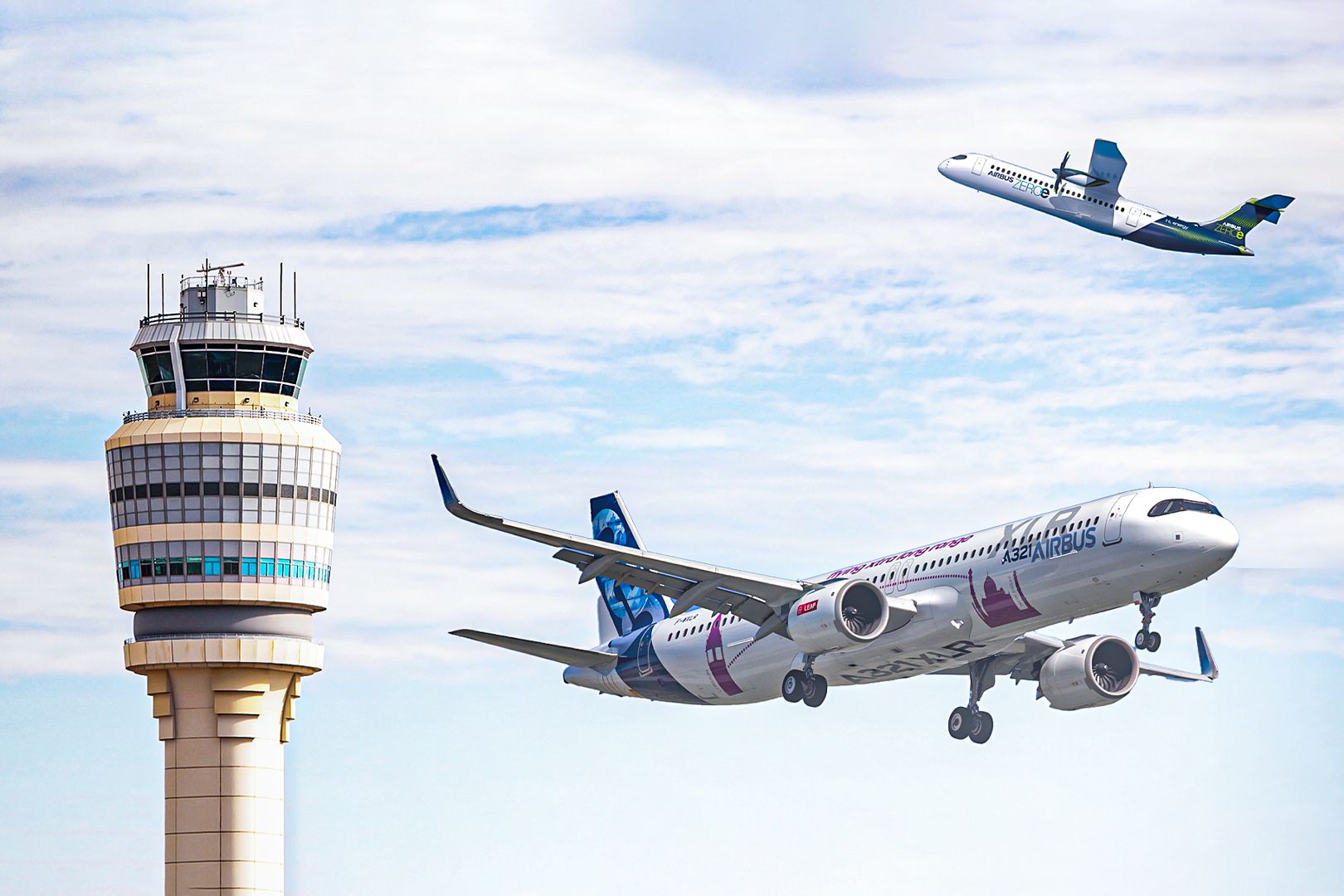
Related
Sustainability: Here’s How Airbus Is Working Towards Net-Zero By 2050
Airbus spoke to Simple Flying about hydrogen-powered aircraft, the A380, and its yearly $2 billion investment in sustainable innovations.

